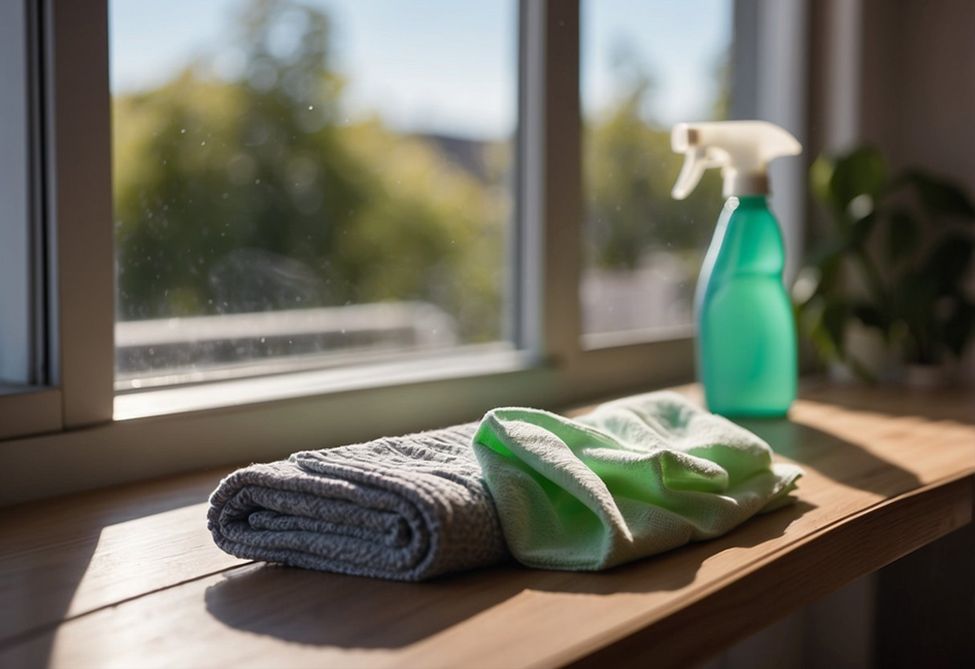Window shutters add style and function to any home. They control light, provide privacy, and enhance the look of rooms.
But like any part of a house, shutters need regular care to stay in good shape.
Proper cleaning and upkeep of indoor shutters keep them looking great for years.
This article will cover simple tips to clean and maintain different window shutters.
With the right approach, anyone can keep their shutters in top condition without much time or effort.
1) Dust Regularly with a Microfiber Cloth
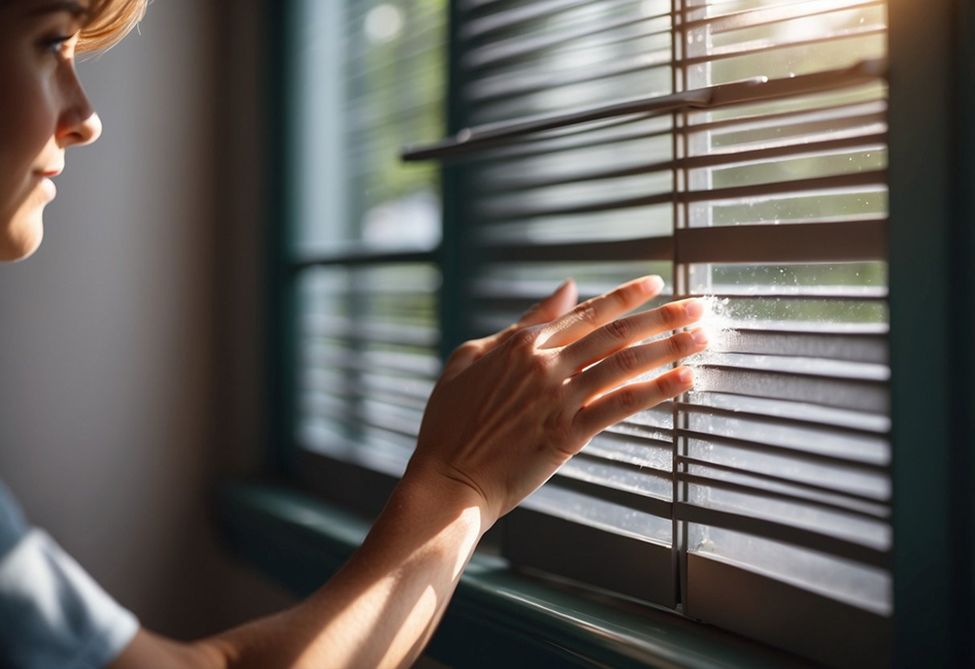
Keeping indoor window shutters clean starts with regular dusting. The best tool for this job is a microfiber cloth. It traps dust effectively without scratching the shutter surface.
People should dust their shutters at least once a week for best results. This prevents buildup and makes deep cleaning easier later on.
To dust properly, gently wipe the slats with a microfiber cloth. It’s important to clean both sides of each slat. Tilting the slats makes this task easier.
A small handheld vacuum with a brush attachment can be useful for hard-to-reach areas. This helps remove dust from corners and crevices.
After dusting, the microfiber cloth needs proper care. Washing it regularly keeps it effective. Use warm water and mild detergent, but avoid fabric softener.
Maintaining a clean microfiber cloth ensures it remains a powerful tool for keeping shutters dust-free. This simple habit goes a long way in preserving the beauty of indoor window shutters.
2) Use a Vacuum Cleaner with Brush Attachment
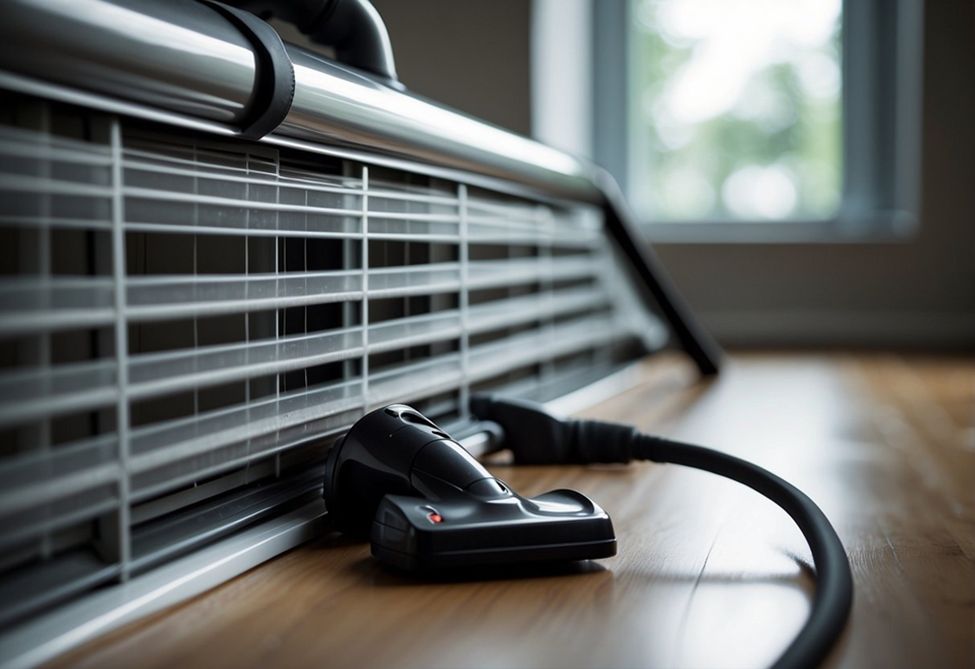
A vacuum cleaner with a brush attachment is a great tool for cleaning indoor window shutters. It helps remove dust and debris quickly and effectively.
Start by setting your vacuum to its lowest suction setting. This prevents damage to the shutters while still thoroughly cleaning them.
Attach the soft brush attachment to your vacuum cleaner. This gentle brush is perfect for cleaning delicate surfaces like shutters.
Vacuum each slat individually, moving from top to bottom. Be sure to clean both sides of the slats.
Pay extra attention to corners and crevices where dust tends to accumulate. The brush attachment easily reaches these hard-to-clean areas.
For stubborn dirt, gently brush the slats with the attachment before vacuuming. This loosens the dirt, making it easier to remove.
Remember to vacuum the frame of the shutters as well. Dust and cobwebs often gather in these areas.
Repeat this process regularly to keep shutters clean and dust-free. Weekly vacuuming can significantly reduce the need for deep cleaning.
3) Wipe with a Damp Cloth and Mild Soap Solution
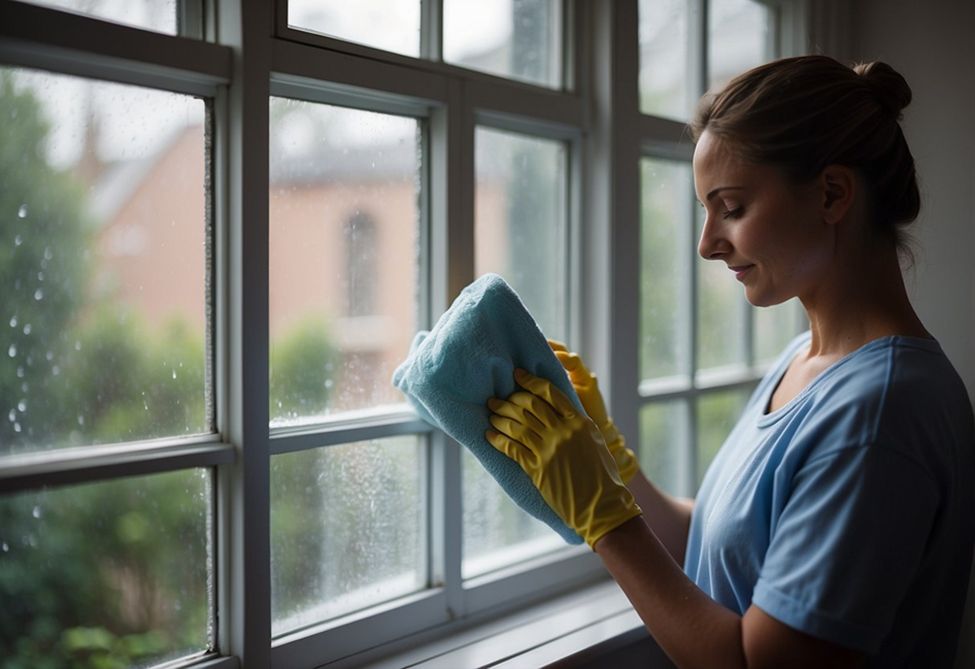
A damp cloth and mild soap solution can be effective for tougher dirt and grime. Mix a small amount of gentle dish soap with warm water in a bucket.
Dip a soft, lint-free cloth into the solution and wring it out well. The fabric should be damp, not soaking wet.
Gently wipe down each shutter slat and frame. Pay extra attention to corners and hinges where dirt can build up.
Be careful not to oversaturate the shutters, especially if they’re made of wood. Too much moisture can damage the material.
After cleaning with the soap solution, rinse the shutters with a clean, damp cloth to remove any soap residue.
Finally, dry the shutters thoroughly with a soft towel. This prevents water spots and potential damage from lingering moisture.
4) Avoid Harsh Chemicals and Abrasive Cleaners
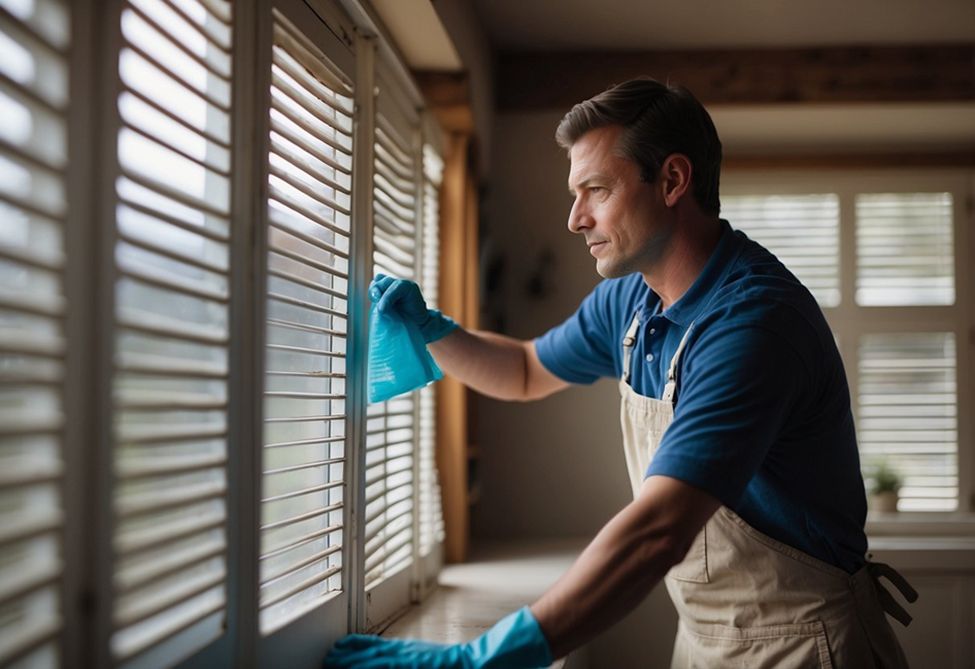
When cleaning indoor window shutters, it is important to avoid harsh chemicals and abrasive cleaners. These can damage the shutter material and ruin its appearance.
Harsh chemicals like bleach, ammonia, and abrasive cleaners should never be used on shutters. They can cause discoloration, fading, or even corrosion of the shutter surface.
Instead, opt for a mild soap and water solution. This is gentle enough to clean effectively without harming the shutters. Apply the cleaning solution with a soft cloth or sponge.
A damp cloth or sponge can be used in a circular motion for dirt. Avoid scrubbing too hard, as this can scratch the shutters’ surface.
After cleaning, it’s crucial to rinse the shutters thoroughly with clean water. This removes any soap residue that could leave streaks or attract dust. Drying the shutters with a soft towel helps prevent water spots.
5) Check for Loose Screws and Tighten if Necessary
Loose screws can cause shutters to wobble or hang unevenly. This issue often develops over time due to regular use and vibrations.
To check for loose screws, gently wiggle each shutter panel. If you notice any movement, inspect the hinges and mounting points closely.
Use a screwdriver to tighten any loose screws you find. Be careful not to overtighten, as this can strip the screw or damage the wood.
For stubborn screws, apply a drop of penetrating oil to loosen any rust before tightening. This can help prevent stripping.
If a screw hole has become enlarged and no longer holds the screw securely, try using a slightly larger screw. Alternatively, fill the hole with wood filler, let it dry, then re-drill and insert the original screw.
Regular checks for loose screws can prevent major problems and extend the life of your shutters. It’s a simple task that can greatly affect shutter performance and appearance.
6) Inspect and Clean Hinges and Hardware
Regularly inspecting and cleaning the hinges and hardware of indoor window shutters is crucial for their proper function and longevity. Start by examining the hinges for any signs of rust, corrosion, or damage.
Use a soft cloth to wipe away surface dirt and clean the hinges. For stubborn grime, mix mild soap and warm water.
Apply this solution to the hinges using a soft-bristled brush or old toothbrush. Gently scrub to remove dirt and buildup, paying special attention to hard-to-reach areas.
After cleaning, rinse the hinges with a damp cloth to remove any soap residue. Dry thoroughly with a clean towel to prevent rust formation.
Apply a small amount of lubricant to the hinge pins for optimal performance. This helps reduce friction and ensures the shutters’ smooth operation.
Remember to clean other hardware components, such as locks or latches. Use the same gentle cleaning method as for the hinges.
If any parts appear damaged or excessively worn, consider replacing them to maintain the shutters’ functionality and appearance.
7) Repaint or Stain Shutters Periodically
Repainting or staining indoor shutters helps maintain their appearance and extend their lifespan. The frequency depends on the shutter material and the level of wear.
Wood shutters may need repainting or staining every 3-5 years. Vinyl shutters can be painted to refresh their look, though less often than wood.
The shutters should be cleaned thoroughly before painting. A gentle scrub with soapy water removes dirt and grime. Rinsing and drying the shutters completely is crucial.
Light sanding may be necessary to create a smooth surface for wood shutters. Applying a primer before the paint or stain ensures better adhesion and color.
When painting vinyl shutters, it is important to use paint specifically designed for vinyl. This type of paint adheres better and resists peeling.
Applying thin, even coats of paint or stain yields the best results. Multiple light coats are preferable to one thick coat. Allowing proper drying time between coats is essential for a durable finish.
8) Use Vinegar Solution for Tough Stains
Vinegar is a powerful cleaning agent that can help remove stubborn stains from indoor window shutters. Mix equal parts white vinegar and water in a spray bottle to make an effective cleaning solution.
Spray the vinegar mixture directly onto tough stains. Let it sit briefly to break down the dirt and grime.
Wipe the area with a soft cloth or sponge. For extra scrubbing power, use an old toothbrush to gently work on the stain.
Rinse the shutter with clean water to remove any leftover vinegar solution. Dry the area thoroughly with a clean, lint-free cloth to prevent water spots.
This method works well on various stains, including hard water marks and mildew. It’s safe for most shutter materials, but always test it on a small, hidden area first.
Repeat the process as needed for particularly stubborn stains. Vinegar’s acidic nature helps break down dirt without damaging the shutter’s surface.
Elevate Your Home’s Elegance with Custom Blinds & Shades from Boca Blinds
Are you tired of glaring sunlight disrupting your indoor comfort? Are you worried about prying eyes invading your privacy?
At Boca Blinds, we understand the importance of aesthetics and functionality in your home.
That’s why we offer top-notch custom blinds and shades tailored to your needs. Imagine the peace of mind with our expertly designed window treatments, which enhance your home’s style and provide optimal privacy and light control.
Our extensive range of services continues beyond blinds and shades. We also offer professional window treatments and shutters that seamlessly blend with your decor. Our team of experienced designers and installers ensures a hassle-free experience from start to finish. Don’t let poorly chosen window coverings detract from your beautiful home.
Click now to schedule your free in-home consultation and take the first step towards transforming your living space.
Frequently Asked Questions
What is the best method to clean plantation blinds?
The best way to clean plantation blinds is to dust them regularly with a microfiber cloth. Close the slats and wipe each one from top to bottom. For deeper cleaning, use a vacuum with a soft brush attachment.
Can shutters be washed, and if so, how?
Yes, shutters can be washed. Mix mild dish soap with warm water. Dip a soft cloth in the solution and wring it out. Gently wipe each slat and the frame. Avoid oversaturating the shutters.
What’s the recommended way to clean white shutters without discoloring them?
Use a gentle soap solution and warm water to clean white shutters safely. Avoid harsh chemicals or abrasive cleaners that can damage the finish. Dry the shutters completely after cleaning to prevent water spots.
What are the steps for cleaning windows that have plantation shutters installed?
First, clean the shutters using a microfiber cloth or vacuum. Next, open the shutters fully. Clean the windows with a glass cleaner and lint-free cloth. Be careful not to get cleaner on the shutters.
Is vinegar a safe and effective cleaning agent for shutters?
Vinegar is generally safe for shutters, but using a mild soap solution is best. If using vinegar, dilute it with water. Test on a small, hidden area first to ensure it doesn’t damage the finish.
How can I prevent dust accumulation on my window shutters?
To reduce dust buildup, dust shutters should be used weekly with a microfiber cloth or feather duster. Keep windows closed on windy days. Use air purifiers to reduce indoor dust. Vacuum the room regularly to minimize airborne particles.



